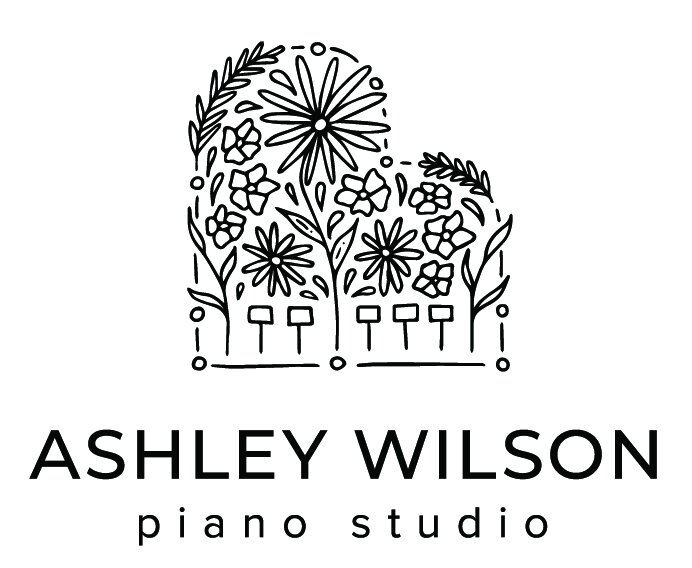Making sense of memorization
Although memorization is often thought of as the final step in preparing a piece for performance, the process of learning new material requires memorization to some degree. Our brains immediately begin memorizing the motions we use to play a piece, whether or not we realize it!
Accurate Repetition
A solid foundation for memorization is built when we take our time in the initial stages of learning a new piece. The goal is to make as many correct sounds and movements as possible, even when a piece is unfamiliar to us. This is best done by working deliberately in small sections. Accurate repetition aids memorization even when we’re not in the “memorization phase” of learning a piece.
Students each have a die in their piano binder pouch, which they can roll to determine how many times to repeat sections of their music. Does every repetition have to be absolutely perfect? Nope! Instead of hyper-focusing on perfection, I ask students to focus more on how repetitions begin to feel easier—not perfect—as they move forward.
Using the senses
The more senses we can involve in the memorization process, the more secure our memorization becomes. I like to focus on sound, sight, movement, and touch. Before applying memory strategies that focus on a given sense, it’s important to know how to “tap in” to that sense in a clear, mindful way. Of course, it’s really hard to completely isolate just one sense—there is definitely some overlap of senses in the strategies below.
How it sounds
To tap into your sense of sound, go outside and listen closely to the ambient noise. How many sounds can you hear? Birds chirping? Traffic? The wind in the trees? List as many as you possibly can! This is how detailed we want to be when making music. Then, try these tasks with the music to be memorized:
Sing the melody while playing the accompaniment.
Sing the accompaniment while playing the melody.
Play small sections with your eyes closed, focusing on what you hear.
Sing either the melody or accompaniment alone, away from the piano.
How it looks
To tap into your sense of sight, take a look at your music. Look for patterns, changes in texture, parts that are similar, and parts that are contrasting. In what ways does the music look the way it sounds? Does it have a shape or contour? After practicing seeing the music with increased attention to detail:
Imagine small sections of the score with your eyes closed. Can you paint a picture of it in your head? The picture doesn’t have to be note-for-note accurate!
Try to play a small section without the score, using your mind’s image. Notice what feels easy and what feels hard.
Put the music back in front of you and play the same section with the score. What feels easier now that the music is in view? Take note of that—does it give you any clues about what to practice more?
In addition to focusing on the written music, you can look at your hands while playing from memory. Some things you might notice include:
Patterns of black keys and white keys.
Shapes of chords and intervals.
How close or far apart the hands are in a given section.
This is a neat video shot from lots of different angles. Notice how the performer’s gaze often falls to his hands!
How it feels (Movement and touch)
To tap into your sense of touch, take a deep breath through your nose and feel the cool air on the back of your throat during the inhale. Put your feet flat on the floor and feel the ground under them. At the piano:
Play very slowly and feel each key under your finger. How does the distance between intervals feel? How does the shape of chords or triads feel?
Feel the pattern of black and white keys under your fingers. Can you feel that the black keys sit higher than the white keys?
Notice how quickly or slowly your fingers sink to the bottom of the key and how they relax after the sound is made.
Are there any moments that you lean from the hips to reach very high or very low keys?
In what shape does the forearm move when traveling around the keyboard?
Off-the-bench practice
Not all practice has to happen at the instrument! Mental practice is a powerful memorization tool that can be used anywhere. A few mental practice strategies include:
Pretend-playing your piece on a tabletop.
Pretend-playing your piece in your mind, imagining all the movements involved.
Looking at your music away from the piano, imagining all the sounds involved.
These are just a handful of memorization strategies focusing on using the senses—there are lots of other ways to approach memorization to explore!
Other resources
Perfect Practice Part 3: Interleaved Practice (interleaved practice lends itself well to memorization!)

